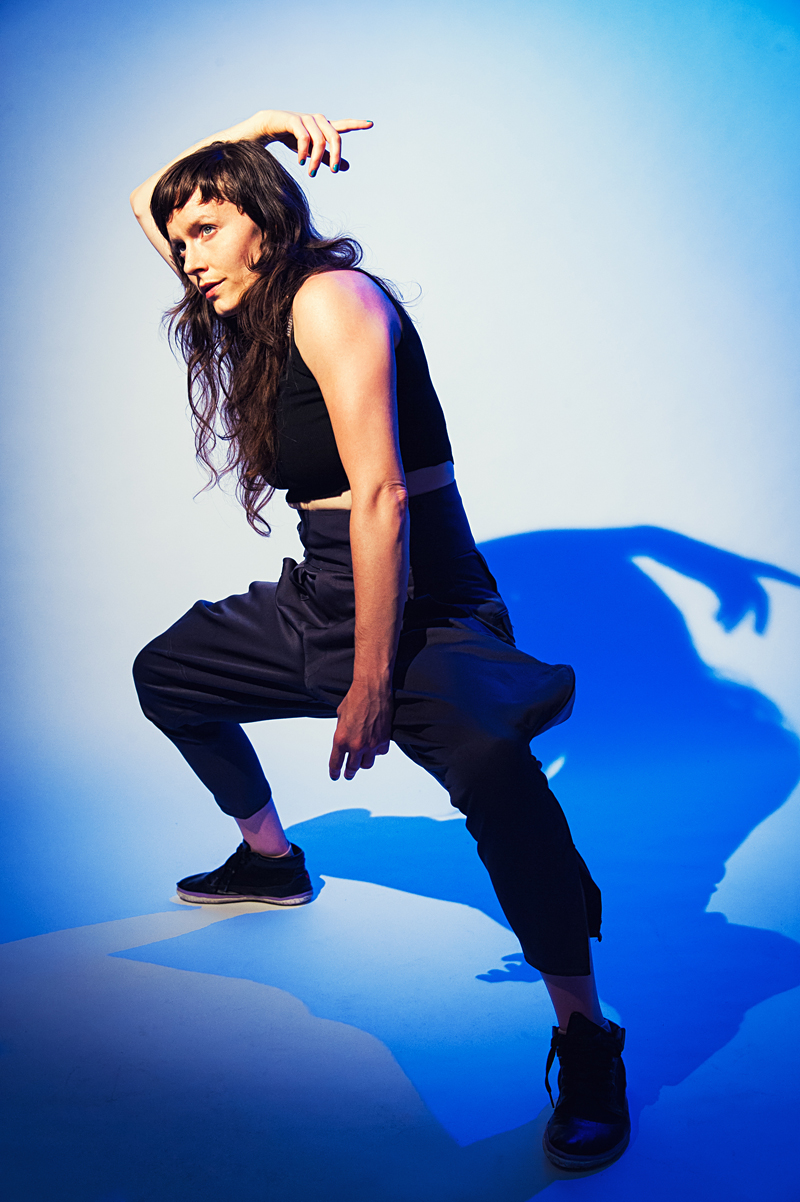Toward the beginning of her extravagantly titled new work, The Most Innovative, Daring, and Original Piece of Dance/Performance You Will See This Decade, dancer/choreographer Amy O’Neal makes a fundamental observation about the nature of imitation and the arts: “We live in a sampling society. [We] imitate to learn . . . how we mix makes us original or mere imitators.” This comment, one of many in her “non-verbal lecture demonstration,” is dead-on about dance. Student dancers copy their teachers, performers emulate their choreographers, but where should dancemakers seek inspiration? In O’Neal’s case, everywhere. Her new show incorporates big hunks of current culture, from hip-hop to exotic dance, from confessional fiction to documentary film.
O’Neal considers cultural appropriation, sexism, gender roles, and the ethics of sampling—a monster-sized list of topics explicated partly by text scrolling on three screens. We’re reading almost as much as we’re watching her move, and it’s still a challenge to keep up with the shifting ideas. Alongside video interviews about booty-dancing, stats from her Google search on chair dances, and her detailed song history of “Money Changes Everything” (which she performs as well), there’s also a little dancing. O’Neal offers a very intense private dance to a seated audience volunteer and performs a pole dance while costumed as a “stripper ballerina” with chaser lights in her Lucite platform heels.
Her lecture covers some significant points, but her dancing is still the reason to show up. The hip-hop portion of the evening, performing choreography from Ciara and Janet Jackson videos, is crackling; and her original compositions feature the same fine-tuned isolations and powerful locomotion, combined with moments of lightness. There’s also an element of subversion to her take on Ciara’s provocative “Ride” (which was banned on BET and the BBC). There she finds the same kind of virtuosity in a pelvic shimmy that a ballerina might display in a series of fouetté turns.
Though O’Neal doesn’t pursue any idea at length, she’s asking important questions about borrowing and pop culture. Everyone imitates, but what responsibility do we have to acknowledge the originators? It was disconcerting not to find Ciara’s and Jackson’s choreographers named in the program notes. In a YouTube world, we can copy or learn from anyone, anywhere, anytime. O’Neal’s titular claim to innovation is tongue-in-cheek, sure, but this decade is only three years old. We’ll need at least the next seven years to sort out all the issues she raises here.








